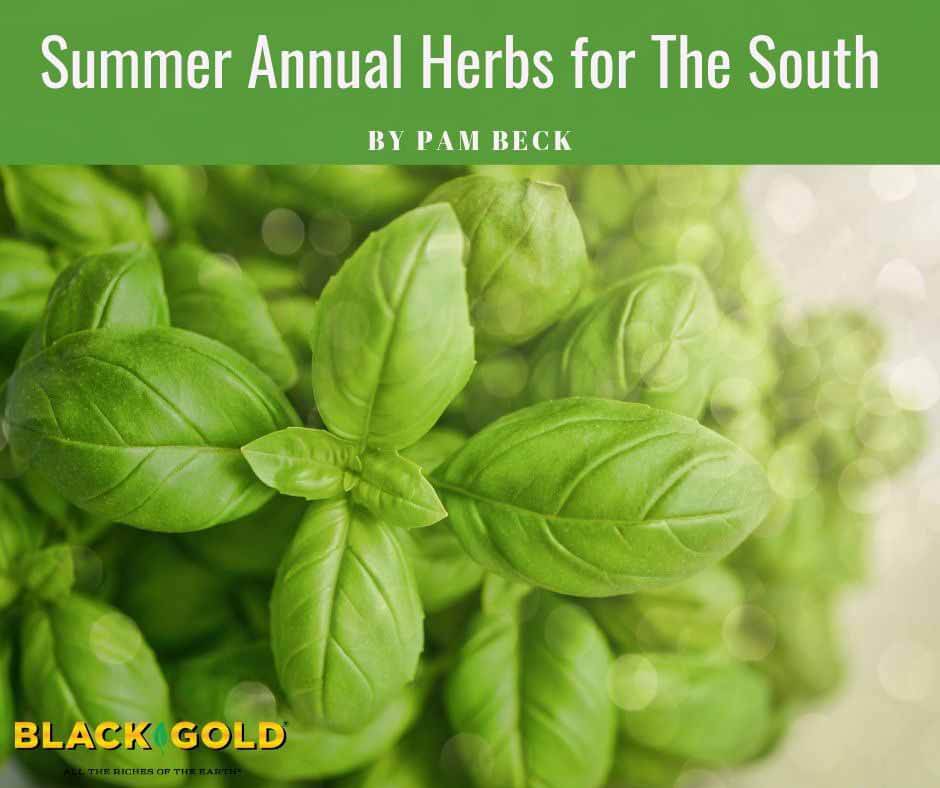
Defining an herb can be so confusing. Botanists say if something is “herbaceous” it is a seed-bearing, non-woody stemmed plant, but this term refers to all non-woody flowering plants. Herbalists, consider plants to be herbs as long as their leaves or stems benefit mankind in some way as medicine, dye, pest deterrents, perfumes, or, for our most popular modern herbs, for flavoring food. (A spice, in contrast, is when a plant’s dried seed, fruit, root, bark, or vegetable is used in comparable applications.)
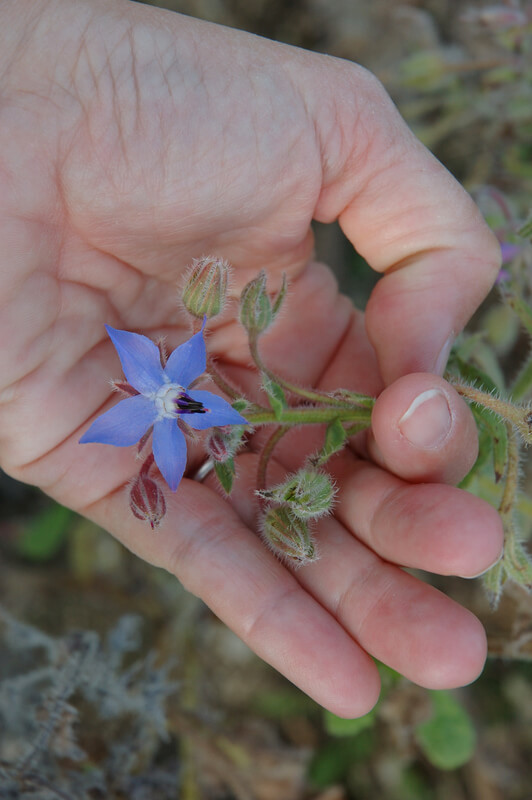
For the purposes of this article, I am going to limit our list to a few annual culinary herbs that also happen to be herbaceous, and perform well in Southeastern gardens.
How to Grow Herbs
First, let’s discuss how to grow herbs. You could assume that most culinary herbs would grow well in the hottest states on the East Coast because so many of our favorite flavorings are from the balmy Mediterranean. The problem here isn’t the sun and heat, it is the high moisture and humidity, which turns silver-leaved plants to mush and breeds fungus.
To combat this problem, try to give herbs lots of breathing space between plants so that what little breeze may be blowing will help dry them out. A clever gardening practice I learned while volunteering in a historic public herb garden is to mulch closely-branching herbs, such as rosemary and lavender, with coarse gravel or bright white rock to reflect heat and light into the undersides and interiors of the plants. This is a perfect application for either decorative white rock (which is less than ½-inch in size) or washed pea gravel.
 All herbs need excellent drainage. Though that isn’t usually an issue for gardeners with sandy soils, those of us with clay-based sites must raise and amend herb gardens with organic matter to encourage drainage and open up the porosity of the soil for good root development. Black Gold® Garden Compost Blend offers a mixture of peat moss and aged compost to improve soil moisture retention, aeration, and drainage. This top-quality garden amendment is OMRI Listed for organic gardening.
All herbs need excellent drainage. Though that isn’t usually an issue for gardeners with sandy soils, those of us with clay-based sites must raise and amend herb gardens with organic matter to encourage drainage and open up the porosity of the soil for good root development. Black Gold® Garden Compost Blend offers a mixture of peat moss and aged compost to improve soil moisture retention, aeration, and drainage. This top-quality garden amendment is OMRI Listed for organic gardening.
For sandier soils that dry out too quickly, try Black Gold Garden Soil, which enriches the soil with needed organic matter to increase moisture retention and promote aeration and drainage.
Growing Herbs in Containers
Growing herbs in containers may be the best choice for gardeners with limited space or sunlight. I have successfully used Black Gold® Natural & Organic Potting Soil with RESiLIENCE® for my potted herbs and was pleased with the results. I credit the earthworm casting fertilizer for the lush growth, even in summer, when most plants slow down in the heat.
Basil
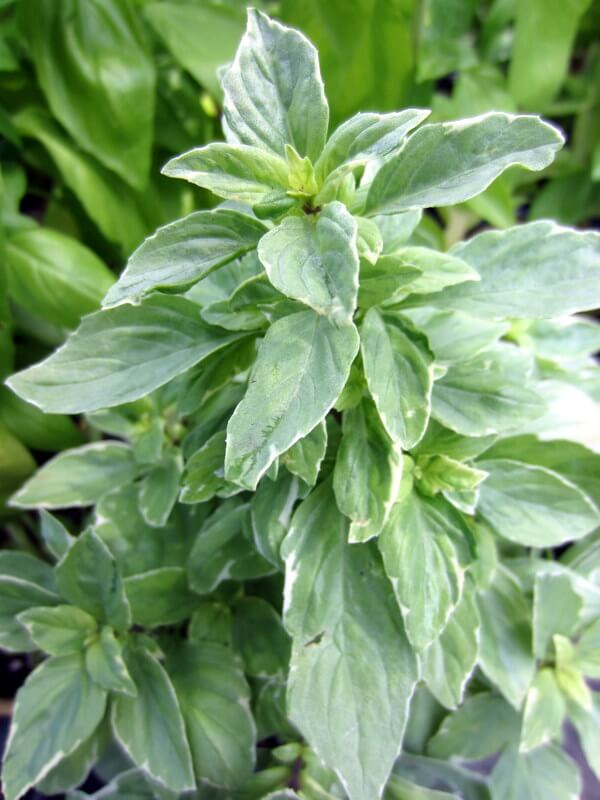
The first annual summer herb that most gardeners can’t wait to get started is basil (Ocimum basilicum) in all of its many forms from various large-leaved sweet basils to the exotics like African blue, Thai, and Indian holy basil (O. sanctum). Varieties of our favorite herb for spaghetti sauce, pizza, and Caprese salad keep being introduced into the gardening trade, including teeny tiny-leafed globe basil, columnar basil, and this year, I have seen more white variegated ‘Perpetual Pesto’ basil offered at garden centers.
Basil loves it hot. It sprouts quickly from seed started directly in the soil, and is only 6-15 weeks to harvest. Keep picking your basil leaves throughout the summer for the bushiest plants, and be sure to keep the endless supply of basil flowers pinched for the best-tasting leaves.
Borage
Borage is another annual that can be started from seed, even when soil temperatures are up into the ’80s. The signature sky-blue, star-shaped flowers of borage (Borago officinalis) can be sugar-coated, dried, and eaten; but, the young leaves add a hint of cucumber taste to salads. Once the fuzzy leaves mature, they are best cooked. Keep planting them throughout the summer for continuous harvesting.
Cilantro
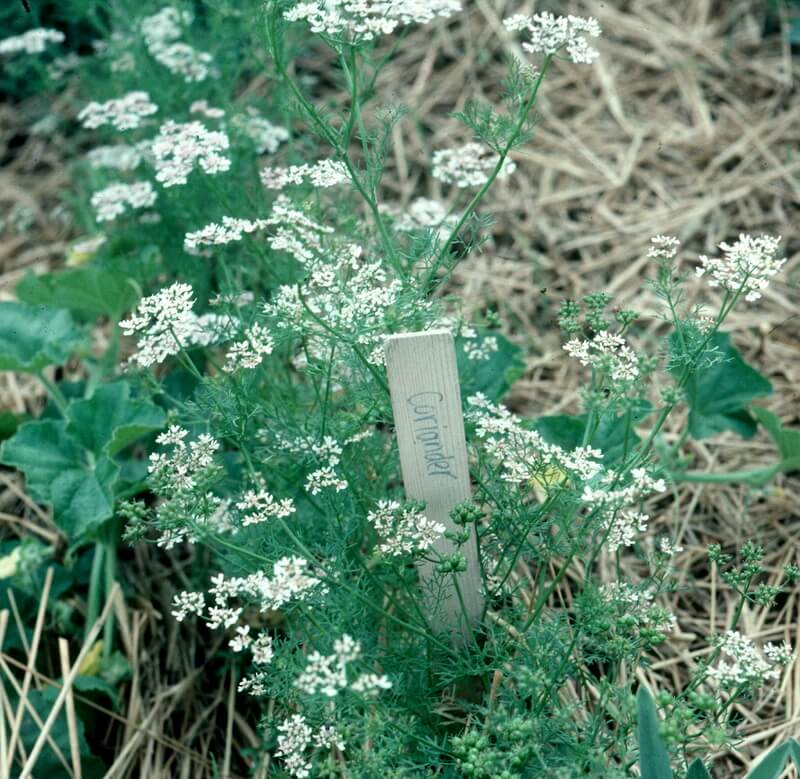
Southerners may be more familiar with the fresh leaves of cilantro than we are with the nutty seeds of the same plant, which are called coriander (Coriandrum sativum). An ancient plant mentioned in the Bible, this herb has been relished throughout history in cultures across the world.
Though usually planted by seed in the early fall in the Southeast United States, coriander left too long in the garden will scatter seed that will pop up everywhere the next spring. Keep cutting and using this plant when it is fresh, as it bolts easily, then vanishes.
Dill
Nothing perfects a potato salad, deviled egg, or pickle like the addition of dill (Anethum graveolens). Dill’s ferny leaves are fragrant and astringent, so the perfect complement to heavy rich foods and anything made using vinegar. This is a plant to keep seeding into your garden every few weeks. Like cilantro, it bolts quickly in the heat, so be prompt to pick it and replace it.
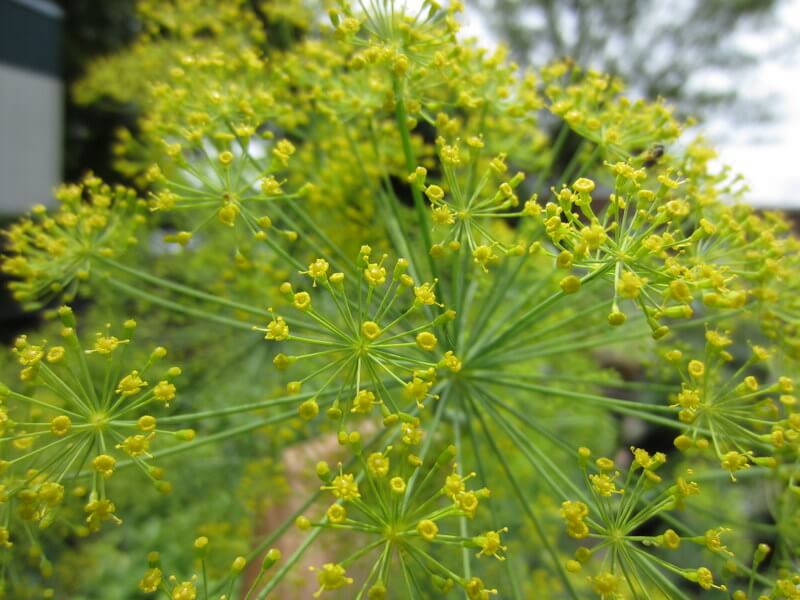
Epazote
Newer to the culinary scene is epazote (Chenopodium ambrosioides) a wild plant that is essential in Mexican bean dishes, soups, and mole sauce. Once treated as an aggressive weed, gourmet cooks are now searching for its fresh young leaves. Your local Latin market may have some viable seed available, otherwise, check organic seed catalogs.
Nasturtium
We love the colorful flowers of nasturtium (Tropaeolum majus), not forgetting that both the fresh blossoms and its rounded leaves can be peppery additions to salads, and that nasturtium flower buds can be pickled like capers. Plant nasturtium early in the summer in very well-drained, moderate to poor soil for the best flowering. Remember that unlike others in this list, these annual plants don’t thrive as well during our dog days of summer but perform better in fall.
Of course, there are cool-season annual herbs, biennial herbs, and plenty of perennial herbs to cultivate in the Southeast, but I hope that this sampling of summer annual culinary herbs will inspire you to keep planting something special through the hottest days ahead.

